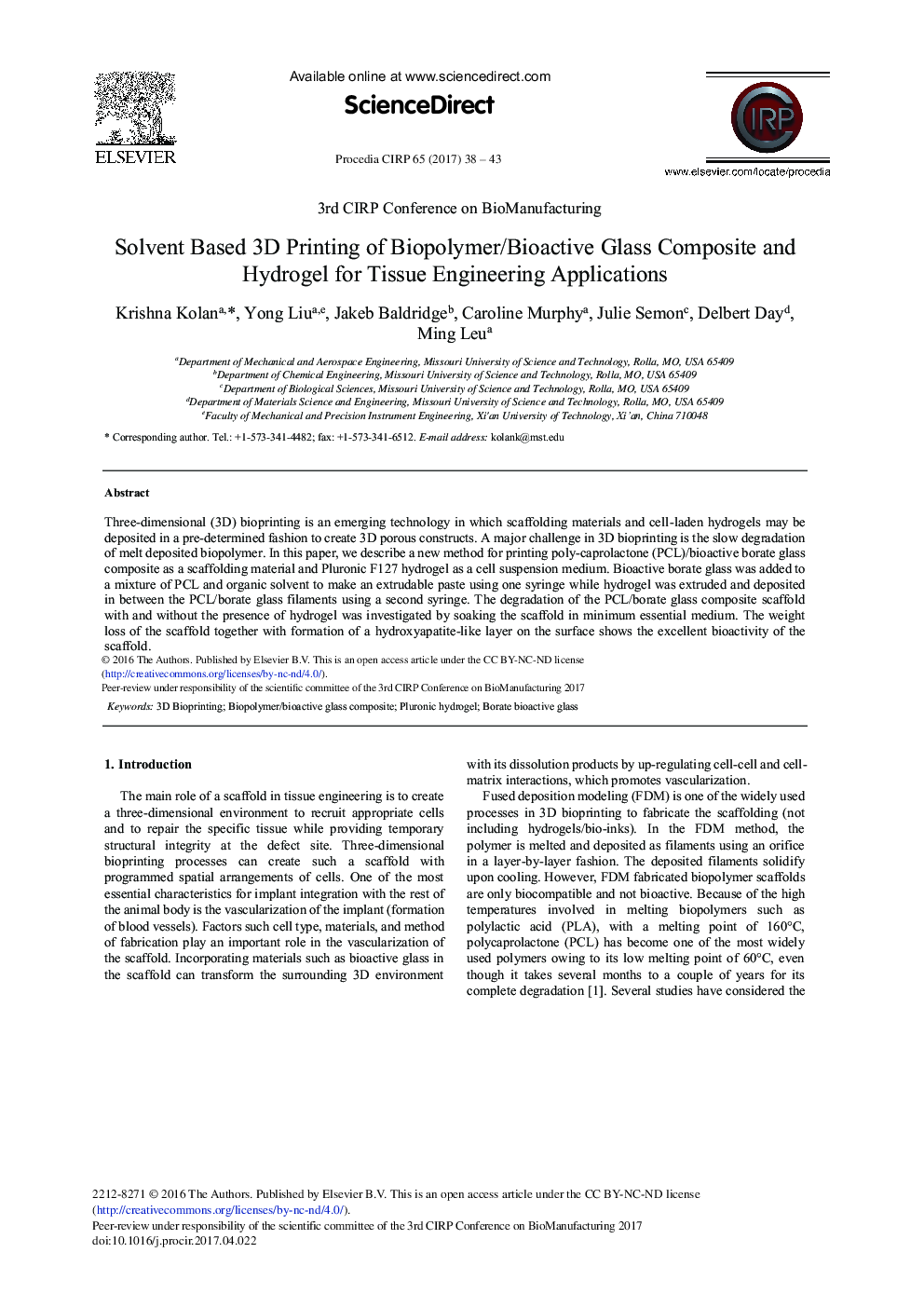| Article ID | Journal | Published Year | Pages | File Type |
|---|---|---|---|---|
| 5469635 | Procedia CIRP | 2017 | 6 Pages |
Abstract
Three-dimensional (3D) bioprinting is an emerging technology in which scaffolding materials and cell-laden hydrogels may be deposited in a pre-determined fashion to create 3D porous constructs. A major challenge in 3D bioprinting is the slow degradation of melt deposited biopolymer. In this paper, we describe a new method for printing poly-caprolactone (PCL)/bioactive borate glass composite as a scaffolding material and Pluronic F127 hydrogel as a cell suspension medium. Bioactive borate glass was added to a mixture of PCL and organic solvent to make an extrudable paste using one syringe while hydrogel was extruded and deposited in between the PCL/borate glass filaments using a second syringe. The degradation of the PCL/borate glass composite scaffold with and without the presence of hydrogel was investigated by soaking the scaffold in minimum essential medium. The weight loss of the scaffold together with formation of a hydroxyapatite-like layer on the surface shows the excellent bioactivity of the scaffold.
Keywords
Related Topics
Physical Sciences and Engineering
Engineering
Industrial and Manufacturing Engineering
Authors
Krishna Kolan, Yong Liu, Jakeb Baldridge, Caroline Murphy, Julie Semon, Delbert Day, Ming Leu,
